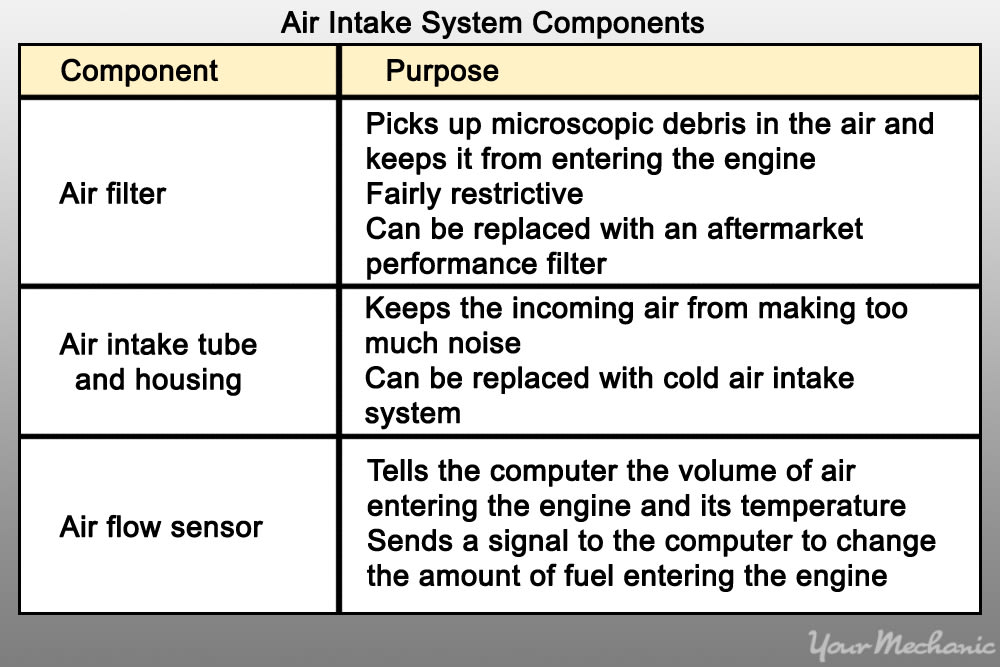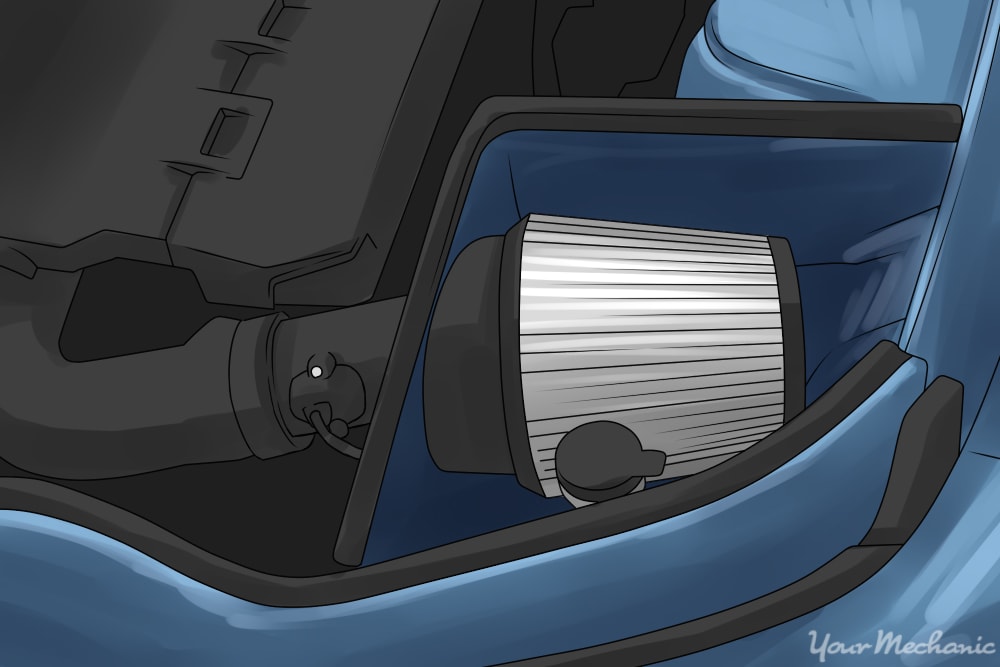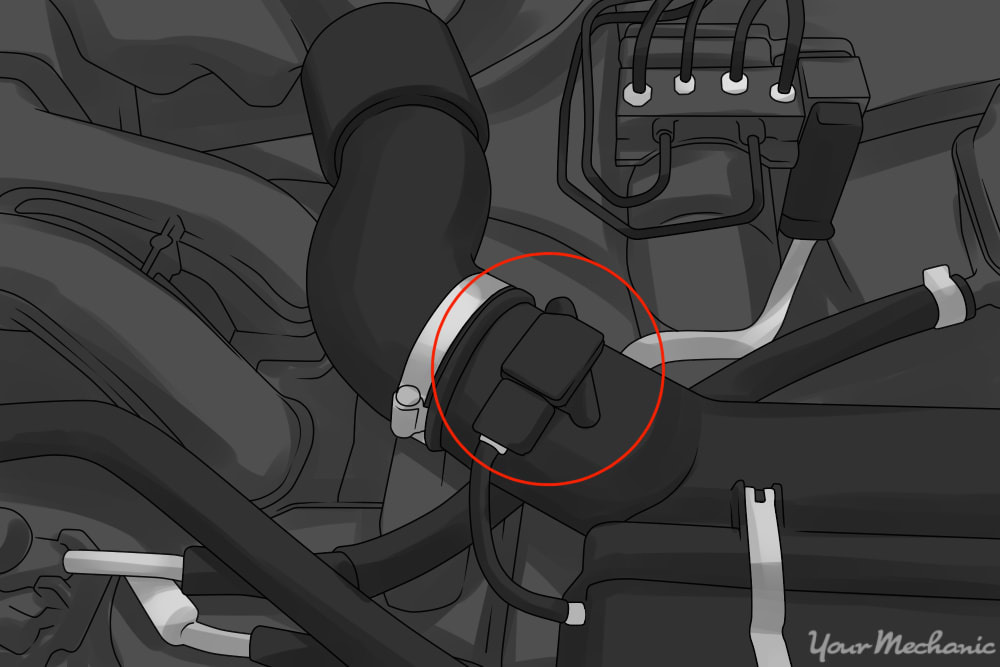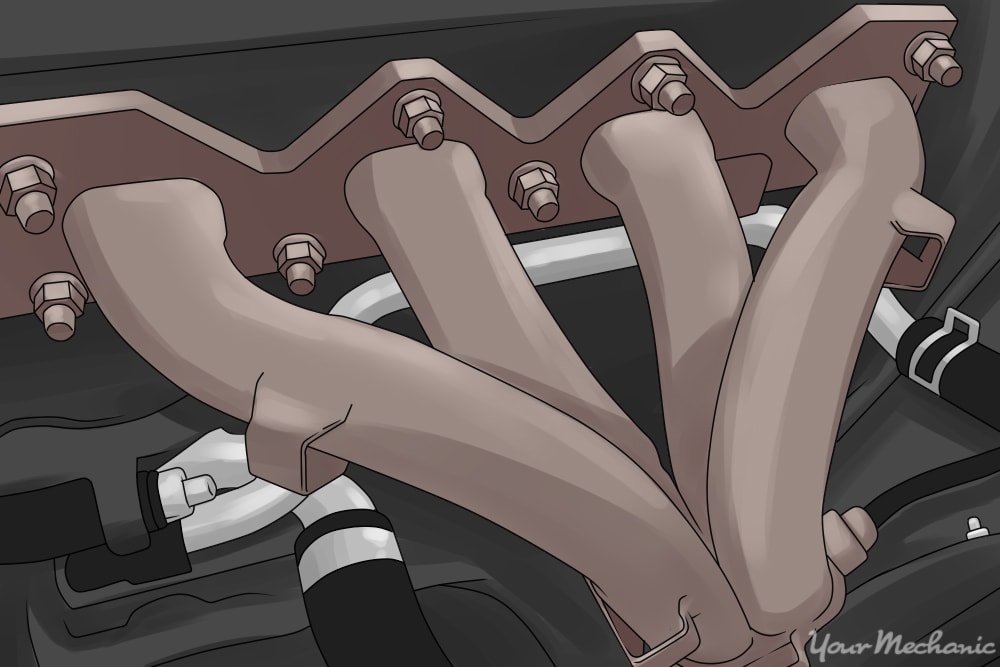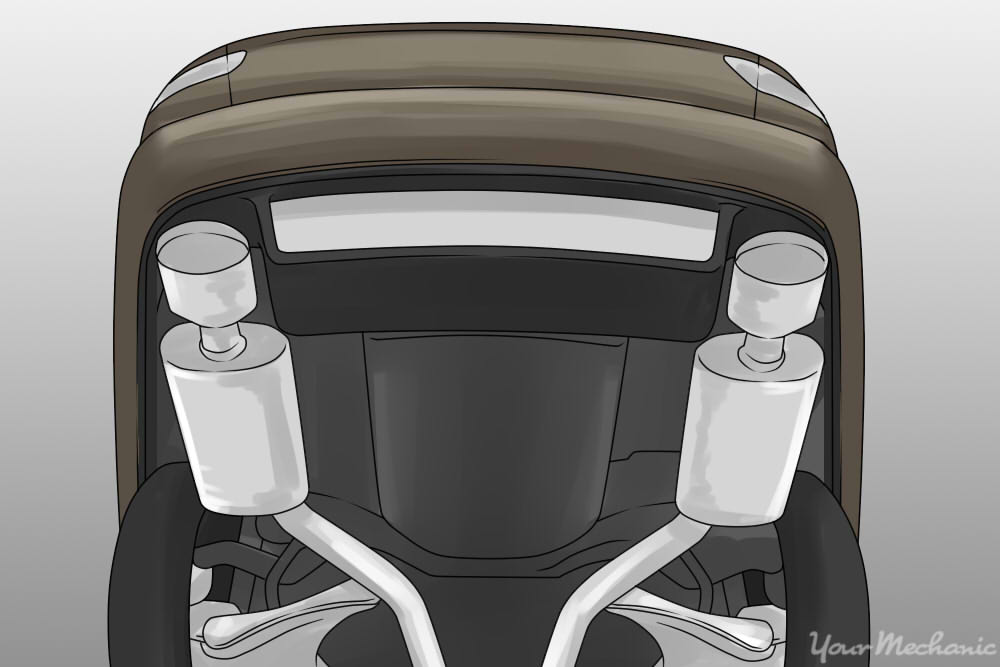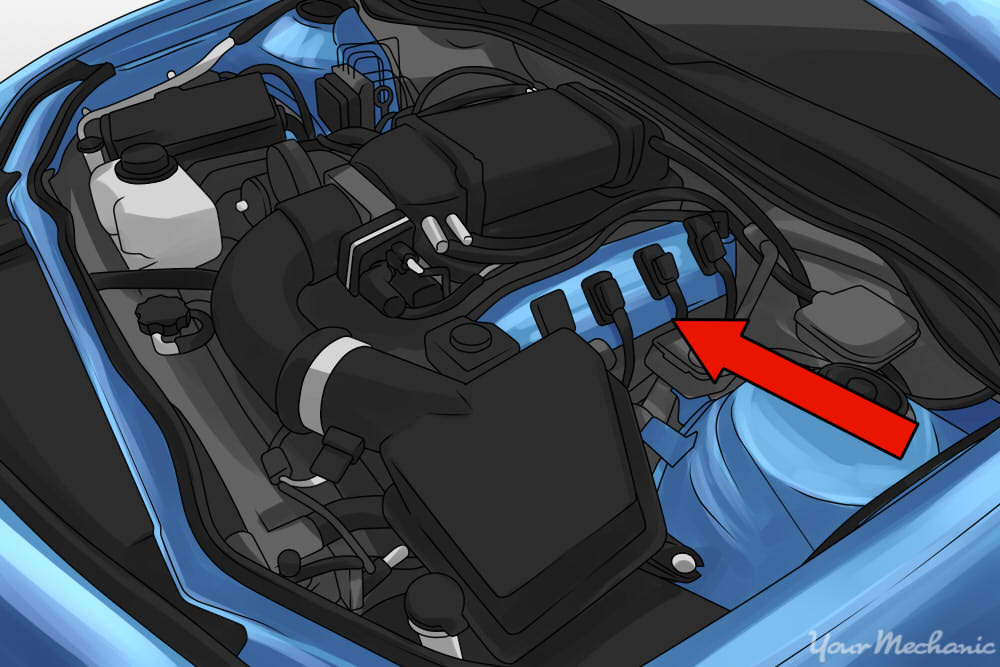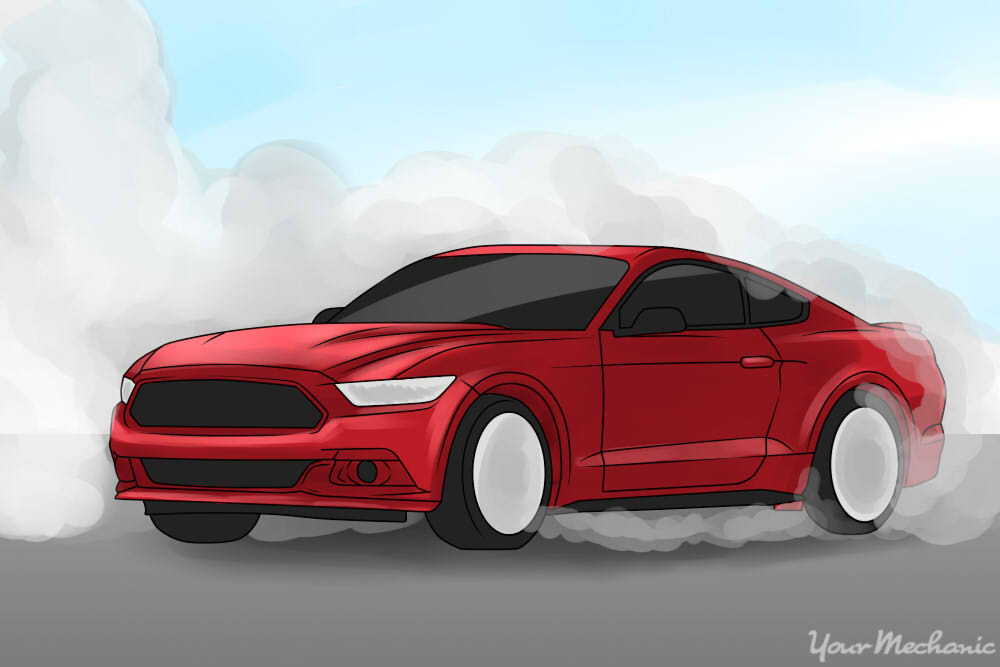

When most cars are built, the manufacturer builds them with many things in mind. They try to consider what the consumers may want. They try to make the car perform well, get good fuel mileage, run quietly, and drive smoothly down the road. Many of these will counteract the other, so it becomes a balancing act. Performance and horsepower become tradeoffs to be able to make the vehicle quieter and more fuel efficient. But, there are some modifications that can be made to your car to get some of that performance back.
Part 1 of 6: Understanding your car
Essentially, your engine is a glorified air compressor. This means that you can get more performance out of it if you can get more air in and more air out quickly and efficiently.
Air enters the engine through the air intake. The intake consists of an air filter, an air filter housing, and an air tube that connects the filter housing to the engine
Air leaves the engine through the exhaust system. Once combustion takes place, the used air is pushed from the engine through the exhaust manifold, into the catalytic converter, and out of the muffler by way of the exhaust pipes.
Inside of the engine, power is produced. This occurs when the air/fuel mixture is ignited by the ignition system. The larger the combustion chamber is inside of the engine, and the more precise the air/fuel mixture is, the higher the amount of power being created.
Modern vehicles use a computer to control what occurs inside the engine. Through the use of sensors, the computer can calculate the exact amount of fuel that should enter the engine, and exactly when it should be ignited.
By making some changes to these systems, you can see a substantial change in the performance of your vehicle.
Part 2 of 6: The air intake system
Modifications to the air intake system will allow more air to enter the engine. With the introduction of more air, the result will be more power.
- Note: Not every vehicle will have an air flow sensor; those that do may not always have a performance replacement available.
An aftermarket cold air intake system will allow more air to enter the engine. If you aren’t sure how to replace the air intake system, a certified mechanic can replace the air intake for you.
Installing an aftermarket mass air flow sensor on vehicles that are equipped for one can help increase the amount of air taken into the engine, and also increase the amount of fuel injected into the engine. YourMechanic offers this installation service if you aren’t comfortable replacing the sensor yourself.
Part 3 of 6: The exhaust system
Once you are getting more air into the engine through the air intake system, you need to be able to get that air out of the engine. There are four components to the exhaust system that can be modified to assist with this:
Component 1: Exhaust manifold. The exhaust manifold is connected to the cylinder head.
Most of these parts are made of cast iron and have tight bends and small ports which can restrict the air leaving the engine.
This can be replaced with an exhaust header on most vehicles. Headers have a tubular design which allows better air flow, making it easier for the engine to expel those exhaust gases.
Component 2: Exhaust pipes. Most vehicles are equipped with exhaust pipes that are built to the minimum diameter to make the vehicle efficient.
Exhaust pipes can be replaced with ones that are larger in diameter to assist in the exiting of exhaust gases.
- Tip: Bigger is not always better when it comes to exhaust pipes. Installing pipes that are much too big for your vehicle can cause the engine and exhaust sensors to read improperly.
Component 3: Catalytic converters. Catalytic converters are part of the exhaust system and are used for emissions.
The converter performs a chemical reaction that allows it to cut down on the amount of harmful chemicals leaving the exhaust.
Original equipment converts are fairly restrictive. High flow catalytic converters are available for many cars which will help reduce that restriction in the exhaust system.
- Warning: When replacing the catalytic converter with an aftermarket one, you must check your local emissions regulations. Many states do not allow these to be used on emissions-controlled vehicles.
Component 4: Muffler. The muffler on your vehicle is there to quiet down the exhaust system.
Mufflers direct the exhaust gases into various chambers to limit any noise or echoing. This design causes keeps the exhaust from being able to leave the engine rapidly.
High flow performance mufflers are available that will limit this restriction and give you better performance and engine sound.
Part 4 of 6: Computer programmers
With all of the electronics on vehicles that are built today, computers play a large part in the potential of an engine. Changing some of the parameters within your computer and changing how some of the sensors read can allow you to get more horsepower from your car. There are two components that you can use to modify the computer in your vehicle.
Component 1: Programmers. Computer programmers allow you to change some of the programming in the computer itself.
These programmers plug into the vehicle's diagnostic port and, with the push of a button, will change things such as air/fuel ratio and ignition timing to achieve more horsepower and torque.
Some programmers have multiple options allowing you to choose the octane of fuel you would like to use, and what kind of performance you would like to see.
Component 2: Computer chips. Computer chips, or piggy backs as they're sometimes known, are components that can be plugged directly into the vehicle's wiring harness in certain areas that will give you more power.
These chips are designed to send different readings to the computer that will cause it to change ignition timing and fuel mixture to optimize power.
Part 5 of 6: Superchargers and turbochargers
One of the largest gains you can get from an engine is by adding a supercharger or a turbocharger. These are both designed to force more air into the engine than what the engine can typically take in on its own.
Component 1: Supercharger. Superchargers will mount to the engine and are typically inline between the engine and the air intake.
They have a belt-driven pulley that spins the internal parts of the supercharger. Depending on the design, the internal parts that spin create a large amount of pressure by drawing in air and then compressing it into the engine, creating what is known as boost.
Component 2: Turbocharger. A turbocharger works much like a supercharger in the fact that it spins and creates boost, sending compressed air into the engine.
Turbochargers are not belt-driven though: they are mounted to the exhaust of the vehicle. When the engine expels exhaust, that exhaust is passed through the turbocharger, which spins a turbine, which in turn sends compressed air into the engine.
Part 6 of 6: Being safe and legal
Most aftermarket parts that are available for your vehicle are designed to create more power. There are some limitations that should be noted whenever you make modifications to your vehicle:
When adding or removing specific parts from your car, you can void the factory warranty. Before replacing anything, you should find out what is covered and allowed by your warranty, to prevent having issues getting coverage.
Adding performance parts can drastically change the way a vehicle drives. If you are not familiar with what these changes will do, you can easily lose control of your car. It is important to know what your car can and cannot do, and keep limit any high performance driving to legal race tracks.
Altering your engine or exhaust system can be illegal in many states due to emissions regulations. It is important to know what is and what is not allowed in your city or state before making any modifications.
Modifying your vehicle’s factory systems to gain performance and horsepower can be a somewhat difficult, but very rewarding task. Whether you install one aftermarket part or all of the above, make sure to be cautious with your car’s new performance handling, and drive safely.


